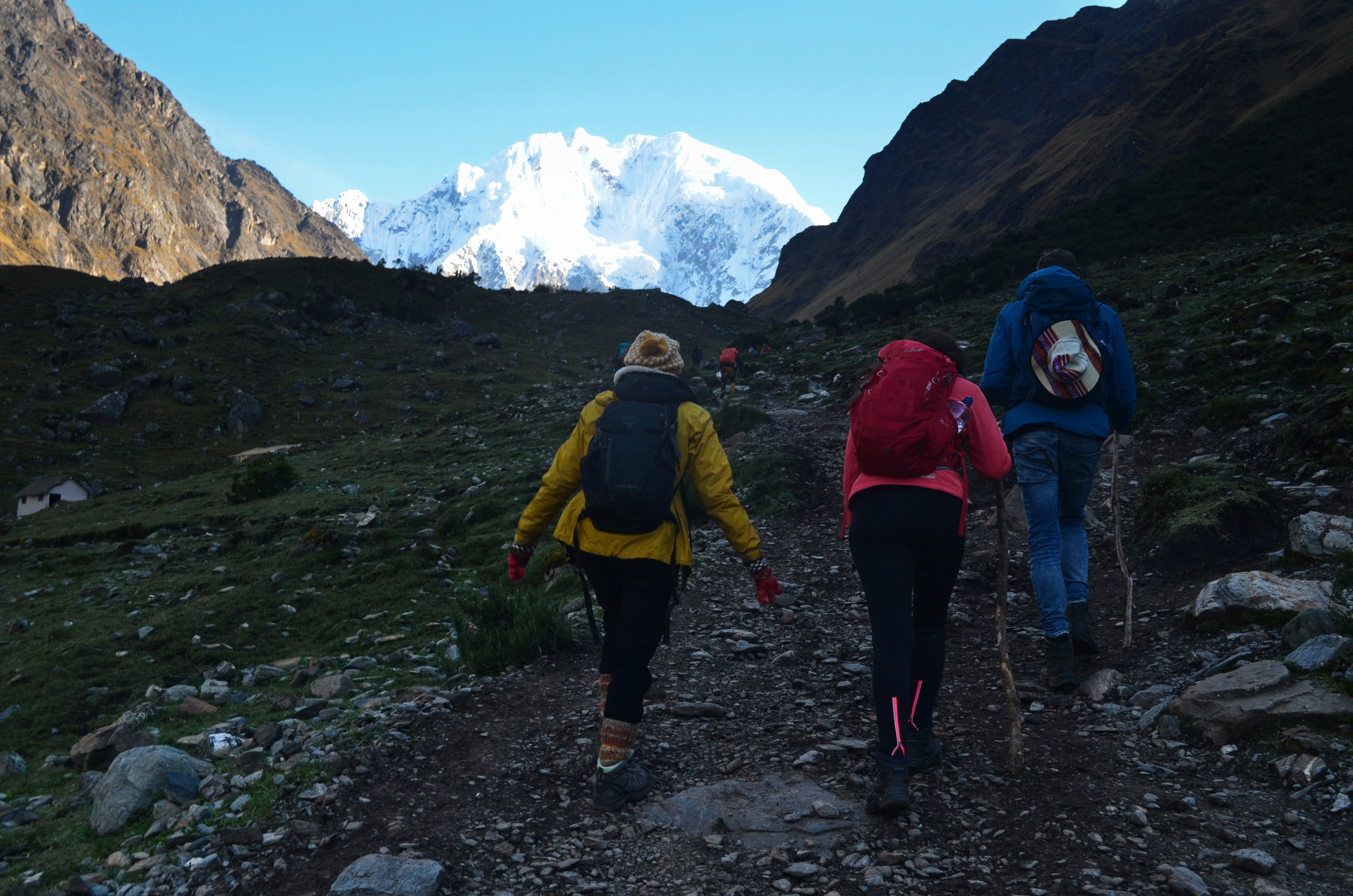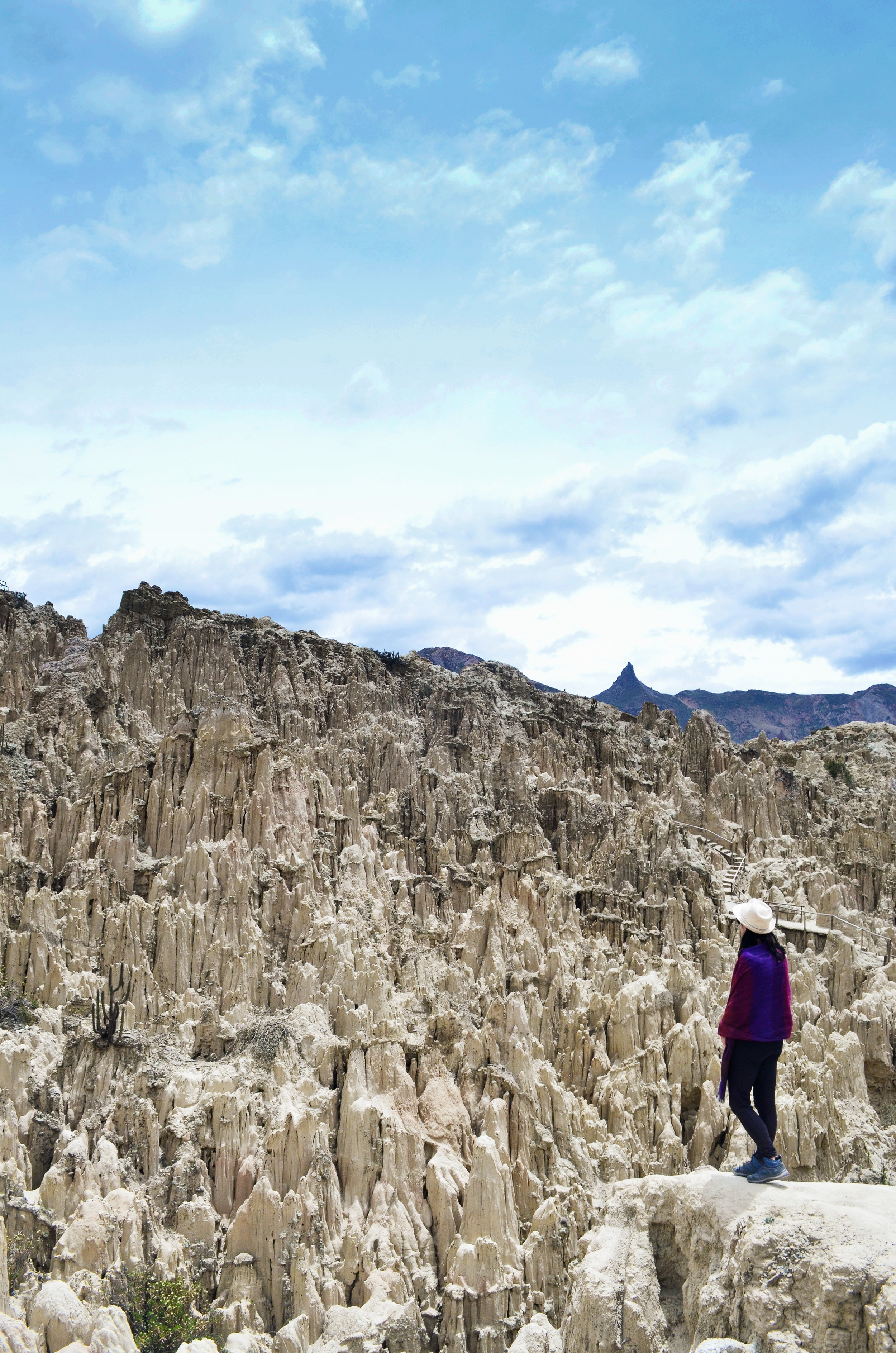Reflections: November 2018
We were still posted up in a cozy apartment in Cusco in November. Jared had a big work deadline the first week of the month, and it felt good to get back into some kind of normal routine. After more than a year hopping around from city to city, having a fridge stocked with favorite ingredients and a closet of clean and unpacked clothes felt heavenly. The laundry, grocery shopping, and binging Netflix series may be what many of us escape from when we hit the road, but it feels good to have a little stability and, frankly, boredom when your life consists of bus rides and searching for a hostel to stay in.
Sunset from our apartment in Cusco
Rebecca’s youngest brother had arrived in Cusco at the end of October, and would be backpacking with us in our final weeks in Peru and then in Bolivia. Yep, the same brother who came down for two and a half months in Colombia was back, and we were so excited to have him with us again.
Rebecca’s brother, Richie, in the Sacred Valley of Peru
After Jared’s big work deadline was met, we were finally free to disappear off the grid for a few days and hit the highlight of our time in Cusco: the Salkantay trek to Machu Picchu. We thought we’d do the five day trek on our own, since a guide isn’t necessary for the trail. But since Rebecca’s brother would have to rent camping gear, we finally decided to join a group. Logistics would be taken care of, and it would be a great opportunity to meet other people.
Epic views from the Salkantay trek
The Salkantay trek was without a doubt one of the most beautiful hikes we’d ever done. We hiked through boulder fields, glacial mountain passes, and into the jungle, changing landscapes every few hours it seemed. Luck was on our side because despite being in the rainy season, we didn’t have rain the entire five days — just some of the most breathtaking views on the continent.
Salkantay Mountain
A great end to our first day of hiking the Salkantay trek: Laguna Humantay
Richie taking in the valley views
Our group was also a blast. Eighteen of us from ten different countries, all trekking through the mountains of Peru. We named ourselves the Pacha Llama family, an adaptation of Pacha Mama (Mother Earth in Quechua) that our local guides found both hysterical and bizarre. Aside from the incredible scenery, delicious meals, and cozy sleeping quarters, we shared a pretty memorable night throwing a party in the tiny town of Santa Teresa. We’d just visited the hot springs and on our way back to the campground while blasting music throwbacks and a good dose of reggaeton, our bus broke down. Roger, one of our guides, ran to the bodega across the street and bought us some beer. The night quickly turned into a party with some cheap Inca Tequila shots and ended at a discoteca in the mountains.
Onward
The 7 snakes, a series of switchbacks up to the mountain pass
Salkantay Mountain
At the highest point of the trek
At Salkantay Pass, the highest point on the trek
Descending from the mountain pass
Heading to the jungle
Though our guides had explained that the second day of the hike would be the hardest due to a steep ascent through Salkantay Pass at more than 15,000 feet above sea level, we all were in agreement that the final day was the most grueling. On day five, we awoke at 4 am and started climbing the 2,000+ steps to the entrance of Machu Picchu. The jungle mist seeped through our clothes and sweat trickled down our faces. While we could have taken a shuttle bus from town to the historic site, after a four day trek, it would have felt to us like giving up. We were on a hike to Machu Picchu, goddammit, and we were going to finish the way we intended — on foot. After 50 minutes of climbing stone steps, to our delight we’d made it. To our disappointment, heavy fog obscured just about everything.
We followed our guide Roger around, unsure if we were feet or miles away from any of the structures. Everything around us was cloaked in white. About an hour into the tour, we, along with a handful from our group, had to part ways and start climbing another mountain. The lady at the tour agency in Cusco had talked us into purchasing an entrance ticket not just to the historic site, but to Machu Picchu mountain. The chance to look down on the ruins from the mountain sitting above it sounded lovely. Unfortunately, the summit was another 2,700 steps. So for the second time that day we climbed up narrow, slippery stone stairs, some of which were a solid two feet in height. We arrived at the summit panting, only to see more fog and no ruins below.
A quick break on the hike up Machu Picchu Mountain
Nothing but fog at the summit
After a quick snack at the top, it was time to head back down. We still had a two hour walk from the town of Aguas Calientes to Hidroelectrica ahead of us, and we needed to catch our bus from Hidroelectrica back to Cusco at 3 pm. Knees trembling, we raced down. Thankfully by the time we’d descended back to the ruins, the clouds had cleared. There it was in front of us, the Incan citadel in all its glory. Though we may not have seen it from the mountain above, it was still spectacular. Rather than race around the enormous site in 45 minutes, we sat at a lookout and soaked it all in. We’d made it, and what a fabulous way to end our time in Peru.
The Inca Citadel, Machu Picchu
Machu Picchu
After a short few final days in Cusco recuperating from the trek, it was time to head into Bolivia. We spent our last days in Peru running around Cusco printing hostel reservation, flight information, and daily itineraries, having passport photos taken, and visiting the bank to request the most perfect $20 USD bills they had on hand. Bolivia would be the first country on our Latin American journey that we’d need to apply for a tourist visa, and from what we’d heard from other Americans, the Bolivian border officials were notorious for making the application process anything but easy. When we finally had our documents in order, we boarded a night bus for Copacabana, the Bolivian lakeside town on Lake Titicaca.
Shortly after sunrise we were at the border, and while non-Americans on our bus later claimed it was the easiest border crossing of their life, for us it was a different story. You see, because the US has meddled in — and in many cases, straight up militarily intervened — Latin American economies and elections, some countries have slapped visas on American tourists. And while in most instances it only means paying some amount of money, the Bolivian government really doesn’t like the US and has made it quite an obstacle course to get a visa. But we were prepared and had all the required documentation. Then it was time to pay the $160 USD visa fee, and when we handed our crisp dollars to the immigration official, he meticulously rubbed his fingers across them and inspected them closely. “No, this one has been folded. And this one has a tiny tear right here.” Thankfully we’d withdrawn extras just for this scenario, having been warned by other travelers that anything less than mint condition would be rejected. Though we were the first off our bus at the border, we were the last to get back on. But we had our Bolivian visas pasted in our passports and were ready to go to Copacabana.
Sunset over Copacabana
The tiny lakeside town is Bolivia’s pride and joy. The country used to stretch to the Pacific ocean, but Chile was ceded the land in a dispute at the end of the 19th century. Since then, Bolivia has unsuccessfully taken Chile to the international courts to gain access to the ocean. It’s still a bitter subject in Bolivia, and Lake Titicaca is the only waterfront the country has. Though it’s a landlocked country, Bolivia has a navy, which is stationed on the lake.
Jared catching the last rays over Lake Titicaca
We spent a few days wandering around the tiny town and enjoyed its calm vibe and radiating sunshine. For the best views of the town, we went to El Calvario for sunset, a short — but breathtaking — hike. At over 12,600 feet above sea level, hiking anywhere is a struggle, but the views from the top of the tiny, sun-drenched town were worth it.
Isla del Sol
Agriculture terraces on Isla del Sol
Ruins on Isla de la Luna
Richie on Isla de la Luna
We finished our short stay in Copacabana with a day trip to Isla del Sol and Isla de la Luna, the islands where the Incas believed the sun and moon gods were born. After a brutally slow boat ride, we were able to walk around the islands and see ruins scattered among farm terraces. Little inns climbed up the hillside of Isla del Sol, and from the top we had 360 degree views of Lake Titicaca that seemed to stretch forever into the distance. Bolivia might not have ocean access, but you could fool us from the lookout point that the lake was as big as the sea.
From Copacabana we headed to La Paz, the sprawling high altitude city surrounded by some of the highest peaks in South America. We didn’t expect to like La Paz as much as we did and ended up extending our stay more than once. We indulged in cheap, savory street food, rode the cable cars, and even went to a cholita wrestling match, a Bolivian take on World Wrestling Entertainment in which Bolivian women decked out in traditional outfits battle in the ring. It also happened to be Thanksgiving in the US while we were in La Paz, and to make up for missing out on one of our favorite days spent feasting with family, we decided to meet up with members of our Pacha Llama family from the Salkantay trek to have a nice dinner. While the food was severely lacking compared to our favorite Thanksgiving dishes, spending time in the good company of friends made the sting of missing the holiday a little sweeter.
The La Paz horizon
Valle de la Luna
Valle de la Luna
At the very end of the month, the neighborhood where we were staying in La Paz ran out of water, and it was a sign for us to move on. As we were well into rainy season, we decided to postpose a trip to the Bolivian jungle for our next visit — after all, roads in that part of Bolivia are known to be washed away during this time of year, and the normal 16-hour trip to the jungle town of Rurrenabaque can turn into a six day journey. Instead, we set off for Sucre, the capital and gorgeous colonial city. When we arrived in the white city and strolled its many beautiful parks in the strong sun, we knew we’d made the right decision.
The white city of Sucre



























